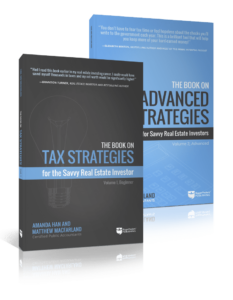Americans are squeezed by inflation and rising housing prices in big cities. They’re seeking refuge in states with warm climates, a lower cost of living, and plenty of job opportunities—states like Florida, Texas, and the Carolinas. An analysis of census data from the National Association of Realtors (NAR) reveals which states lost residents and which made population gains in 2022. The trends clearly indicate that many Americans are moving in response to affordability concerns.
Migration Patterns Are Shifting
The decision to move is not an easy one, even when it becomes unaffordable to stay put. Though the pandemic provided more Americans the opportunity to work remotely while fueling demand for more space, these conditions only resulted in a slight uptick in domestic migration, which has been declining for decades. In 2022, local migration fell to a historic low, according to The Brookings Institute.
The post-World War II era saw about 20% of Americans moving annually. That’s because the U.S. had a younger population with more renters and more single-earner households, making it easier for families to pick up and move for a new job. By the early 2000s, migration rates had decreased to between 13% and 14%, and the Great Recession dampened migration even further.
Rising mortgage rates in the second half of 2022 made migration even less appealing. Homeowners who were able to lock in low interest rate mortgages during the pandemic homebuying boom had no incentive to migrate. And Pew Research notes that fewer people are heading into urban areas where rents have risen rapidly, reversing the trend of urbanization.
But while overall migration is declining, long-distance migration is picking up speed. Movement across counties picked up in 2021-2022, as did migration between states. Longer-distance moves may partly be reflective of trends in forced early retirement and voluntary job-quitting trends that grew prevalent during this time, as people took advantage of these transitions to find better jobs or more affordable housing in other states.
Where Are People Moving?
The six states that brought in the most population growth in 2022 were Florida (+1.9%), Texas (+1.6%), North Carolina (+1.3%), South Carolina (+1.7%), Tennessee (+1.2%), and Georgia (+1.2%). Arizona, Idaho, Alabama, Oklahoma, and Nevada were also high on the list for inbound migration.
According to the Tax Foundation, part of the draw may have been low taxes. But those savings are likely overshadowed by the decrease in mortgage or rent expenses movers to these states may enjoy, especially those coming from major urban areas like New York. The Fiscal Policy Institute reports that the average family leaving New York saves 15 times more in housing costs than tax costs.
The NAR also used USPS data to identify migration trends between metro areas. Cities with the largest inbound moving rates were also in the South and the West. Some of the areas that saw the most population growth include:
- Ocala, Florida
- Tallahassee, Florida
- Charlotte, North Carolina
- Savannah, Georgia
- Houston, Texas
- Deltona, Florida
- Myrtle Beach, South Carolina
- Huntsville, Alabama
- Miami, Florida
- McAllen, Texas
The NAR notes that these Sun Belt areas experienced rapid job recovery after the pandemic. In these areas, there are about 5% more jobs on average than in March 2020.
Where Are People Leaving?
As Americans find new homes in the South and the West, they’re leaving states that have high housing costs, high taxes, and/or slow job growth. The states that lost the most residents in 2022 were California (-0.3%), New York (-0.9%), Illinois (-0.8%), New Jersey (-0.1%), and Massachusetts (-0.1%).
Some of these states have urban hubs with shocking real estate prices—the median sale price for a home in San Francisco is $1.275 million—while others were slow to recover after the pandemic. For example, just one metro area in Illinois has fully recouped its COVID-19 job losses, and only 86% of jobs were recovered statewide as of July 2022.
Housing-Related Relocation Becoming Even More Common
Housing has always been the primary reason people move. They look for better neighborhoods, more space, and more affordable prices. But Census data shows that housing-related moves have become even more common during the pandemic, while the share of people moving for family-related or job-related reasons has shrunk slightly. 46% of Americans moved for housing-related reasons in 2021, up six percentage points from the prior year.
Fewer people are migrating now than ever before. But those who are relocating are going farther distances. As people struggle to find affordable housing in the major cities that have historically been the most desirable places to live, we’re seeing more population growth in Southern and Western areas. Demand for housing in these areas will eventually drive an increase in housing prices, so investors can analyze migration trends to find areas with future growth potential.
Find an Agent in Minutes
Match with an investor-friendly real estate agent who can help you find, analyze, and close your next deal.
- Streamline your search.
- Tap into a trusted network.
- Leverage market and strategy expertise.
Note By BiggerPockets: These are opinions written by the author and do not necessarily represent the opinions of BiggerPockets.
- SEO Powered Content & PR Distribution. Get Amplified Today.
- Platoblockchain. Web3 Metaverse Intelligence. Knowledge Amplified. Access Here.
- Source: https://www.biggerpockets.com/blog/new-census-data-shows-where-americans-are-moving
- 2%
- 2020
- 2021
- 2022
- a
- Able
- About
- According
- across
- ADvantage
- affordable
- affordable housing
- After
- Agent
- Alabama
- always
- Americans
- analyze
- and
- Annually
- appealing
- AREA
- areas
- arizona
- Association
- author
- average
- Beach
- because
- become
- becomes
- becoming
- before
- Better
- between
- Big
- Block
- boom
- border
- brought
- california
- Census
- census data
- Cities
- clearly
- Close
- coming
- Common
- Concerns
- conditions
- Cost
- Costs
- COVID-19
- dashboard
- data
- deal
- decades
- decision
- Declining
- decrease
- Demand
- DID
- Domestic
- drive
- during
- Early
- easier
- enjoy
- Era
- especially
- estate
- Ether (ETH)
- Even
- eventually
- EVER
- example
- expenses
- experienced
- expertise
- families
- family
- Find
- First
- Fiscal
- florida
- Foundation
- Francisco
- from
- fully
- further
- future
- future growth
- Gains
- Georgia
- going
- great
- Growth
- Half
- Heading
- help
- Hidden
- High
- historic
- historically
- Home
- Homes
- households
- housing
- HTML
- HTTPS
- identify
- illinois
- in
- In other
- Incentive
- include
- Increase
- indicate
- inflation
- interest
- INTEREST RATE
- investing
- Investors
- IT
- Jersey
- Job
- Jobs
- July
- just one
- largest
- leaving
- LG
- likely
- List
- live
- living
- local
- Look
- losses
- Low
- made
- major
- Making
- many
- March
- march 2020
- Market
- massachusetts
- Metro
- migrate
- migration
- more
- Mortgage
- Mortgages
- most
- move
- movement
- Movers
- moves
- moving
- necessarily
- network
- NEVADA
- New
- New Jersey
- New York
- next
- North
- north carolina
- Notes
- Oklahoma
- ONE
- Opinions
- Opportunity
- Other
- Others
- overall
- pandemic
- part
- patterns
- People
- percentage
- PEWRESEARCH
- pick
- picked
- Places
- plato
- Plato Data Intelligence
- PlatoData
- Plenty
- points
- policy
- population
- potential
- prevalent
- price
- Prices
- primary
- Prior
- provided
- put
- rapid
- rapidly
- Rate
- Rates
- real
- real estate
- reason
- reasons
- recession
- Recover
- recovery
- Redfin
- Rent
- renters
- represent
- residents
- response
- retirement
- Reveals
- Risen
- rising
- round
- sale
- San
- San Francisco
- Savings
- Search
- Second
- seeing
- seeking
- Share
- should
- Shows
- SIX
- slow
- So
- some
- South
- South carolina
- Southern
- Space
- speed
- States
- stay
- Strategy
- Struggle
- Sun
- Tableau
- tax
- Taxes
- texas
- The
- The West
- time
- times
- to
- transitions
- Trend
- Trends
- true
- trusted
- u.s.
- urban
- Urban Areas
- usps
- war
- warm
- webp
- West
- Western
- which
- while
- WHO
- will
- written
- year
- Younger
- Your
- zephyrnet














